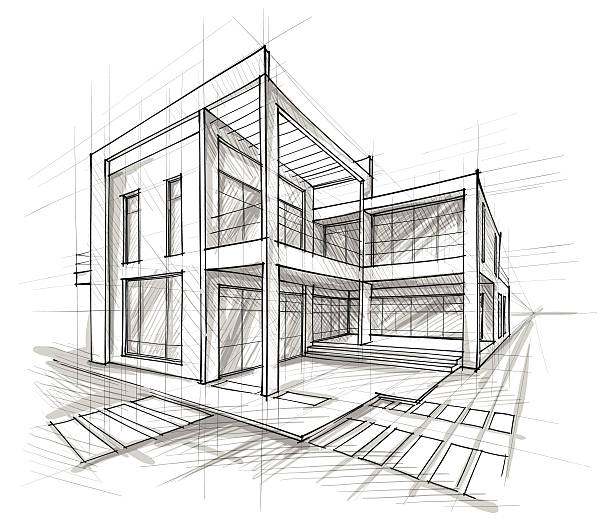The Crucial Role of a Designer in Forming Lasting Urban Environments for Future Generations
The role of an engineer in crafting lasting urban settings is progressively pivotal in reacting to the challenges of environment modification and urbanization. By effortlessly integrating eco-friendly principles right into their styles, architects not just enhance the visual and functional high quality of urban areas however also address pressing problems such as power performance and social equity.
Comprehending Sustainable Urban Layout
Sustainable city design integrates eco-friendly principles with metropolitan preparation to produce atmospheres that are not only comfortable but likewise resistant. This technique stresses the relevance of including natural systems into the city fabric, ensuring that development fulfills the requirements of the here and now without compromising the capability of future generations to satisfy their very own needs. Crucial element of sustainable metropolitan design consist of reliable land use, the promo of biodiversity, and the assimilation of green areas, every one of which add to boosted lifestyle for homeowners.
Additionally, sustainable urban style focuses on the reduction of the metropolitan warm island result, boosted air top quality, and effective stormwater management. It motivates the use of renewable energies and energy-efficient building practices, which substantially reduced carbon impacts. Lasting metropolitan design fosters social equity by creating easily accessible public spaces and advertising mixed-use developments that cater to varied populaces.
Via thoughtful planning and innovative design strategies, lasting metropolitan atmospheres can enhance community strength versus environment modification while fostering economic advancement. This alternative technique not just addresses prompt city difficulties yet additionally prepares for much healthier, extra sustainable cities for generations to find.
Key Obligations of Designers
Engineers play a critical duty fit lasting metropolitan environments by translating style principles right into substantial frameworks and rooms. Their obligations incorporate a vast array of tasks that add to the general success of metropolitan design tasks.
First and foremost, designers perform thorough site evaluations to understand the environmental, social, and social context of their projects. This foundational expertise informs their style choices, making sure that structures balance with their environments. They also engage in joint processes with stakeholders, consisting of city organizers, engineers, and the neighborhood, cultivating an inclusive technique to urban growth.
Additionally, engineers are entrusted with developing styles that enhance energy efficiency, resource conservation, and performance. They need to stick to local zoning laws, developing codes, and sustainability qualifications, ensuring compliance while pushing the boundaries of advancement.
:max_bytes(150000):strip_icc()/Buildingdesigns-GettyImages-912482942-db55b3af711044a3a42ad1040c6711a9.jpg)
Innovative Products and Techniques
In the quest of environmentally accountable design, ingenious materials and strategies have arised as vital elements in the production of sustainable urban settings. Designers are increasingly making use of materials that minimize ecological impact while boosting energy performance. As an example, recycled products, such as reclaimed timber and repurposed metals, not only reduce waste however additionally add special visual qualities to frameworks.
In addition, innovations in modern technology have actually caused the advancement of high-performance materials, such as insulated concrete kinds (ICFs) and photovoltaic or pv glass, which add to energy conservation and harness renewable power. Strategies such as easy solar style and environment-friendly roofs even more exemplify how architecture can harmonize with all-natural systems, reducing reliance on synthetic home heating and air conditioning.
In addition, the integration of clever products, which adapt to environmental modifications, provides promising avenues for improving structure performance - cda architects. These products can react to temperature fluctuations or dampness degrees, optimizing convenience and sustainability
Inevitably, the tactical choice and application of innovative products and techniques equip architects to see produce city spaces that are not just practical and aesthetically pleasing however likewise resistant and ecologically responsible, ensuring a lasting future for generations to find.
Community Engagement and Partnership
The success of innovative products and methods in sustainable city style is significantly boosted by energetic neighborhood engagement and partnership. find out here Architects should recognize that the built atmosphere exceptionally influences the lives of regional homeowners, making it imperative to entail them in the design process. Engaging the neighborhood promotes a feeling of possession and liability, ensuring that developments not only meet aesthetic and functional requirements yet additionally mirror the worths and aspirations of those who occupy them.

Successful area engagement likewise aids in prioritizing social equity within city development. By taking into consideration the voices of marginalized populations, designers can develop areas that are comprehensive and equitable. This way, area interaction and collaboration end up being important to achieving really lasting city environments that serve the requirements of existing and future generations.
Future Fads in Sustainable Design
:max_bytes(150000):strip_icc()/Buildingdesigns-GettyImages-912482942-db55b3af711044a3a42ad1040c6711a9.jpg)
Furthermore, innovations in technology are shaping future trends in sustainable architecture. The combination of smart materials and structure systems enables real-time energy administration, boosting performance and lowering carbon impacts. Technologies such as eco-friendly roofs, living walls, and energy-generating exteriors are becoming standard methods, further advertising ecological balance within city atmospheres.
Furthermore, a change towards biophilic layout is getting traction, highlighting the connection between nature and human well-being. By incorporating natural environments, engineers produce rooms that promote mental health while advertising biodiversity.
Final Thought
In conclusion, architects are pivotal ahead of time sustainable urban environments with their competence in design, cutting-edge products, and neighborhood interaction. By focusing on power effectiveness and source preservation, these professionals add to the production of resilient urban rooms that meet the needs of present and future generations - cda architects. The integration of ecological concepts not just boosts livability yet additionally cultivates social equity, making certain growths resonate with the values and aspirations of the communities they serve